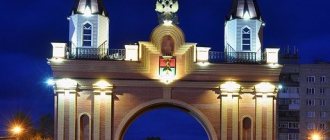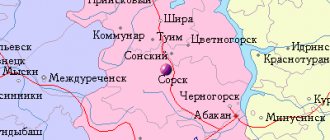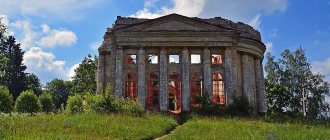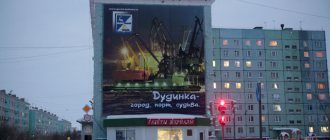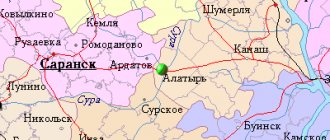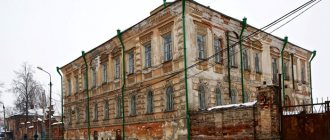Why should Chelny residents go to Mendeleevsk?
We start from the city of Mendeleevsk, on a clear day it can be seen from our bank of the Kama. The history of this city and its surroundings was told to Chelny News by Olga Bodnar, a senior researcher at the Mendeleevsk Museum of Local Lore.
For reference
The city of Mendeleevsk was founded in 1868. It is located on the right bank of the Kama River, on the border with Udmurtia. On August 11, 1967, the urban-type settlement of Bondyuzhsky was transformed into the city of Mendeleevsk. In January 2000, the city of Mendeleevsk received the status of a historical settlement and is now part of the Russian Union of Historical Cities and Regions. 22 thousand people live in Mendeleevsk. Today it is a city of chemists, where mineral fertilizers are produced and oil is extracted. More than 90 cultural heritage sites have been identified on the territory of the Mendeleevsky district, including 24 archaeological monuments, 28 historical monuments, 28 architectural monuments, 11 monuments of monumental art.
Monument of industrial architecture of the 19th century
In Mendeleevsk you can see factory chimneys, which are a monument of industrial architecture of the 19th century.
– In 1850, in the village of Kokshan, merchant and pioneer of the Russian chemical industry Kapiton Ushkov built his first chemical plant. As a result, it became the largest producer of chrompic (potassium dichromate) in Europe. In the 60-70s of the 19th century, the chemical plant’s products were exported to England, Holland and Prussia,” said Olga Bodnar, a researcher at the Mendeleevsk Museum of Local History.
After the sudden death of Kapiton Ushkov, his son Pyotr Kapitonovich becomes his successor. He takes responsibility for the work of the Kokshansky and the second plant under construction, which is located closer to the Kama, in an empty swampy area near the village of Bondyuga. The Bondyuzhsky plant, which produced its first products in 1868, quickly became one of the leaders of the Russian Empire in the production of chemical products. Thanks to the efforts of Peter Ushkov, the annual income of the family enterprise increases from 200 thousand rubles to 4 million. Workers' barracks, a factory office, and social infrastructure facilities are being built around the plant, which became the basis of the workers' village of Bondyuzhsky, then the city of Mendeleevsk.
– In 1893, the famous Dmitry Mendeleev, on the instructions of the Naval Ministry, began work on the production of smokeless gunpowder and chose the Bondyuzhsky chemical plant of the merchant Ushkov as the experimental site, since by that time the enterprise had become one of the largest and most advanced in the Russian Empire. He wrote: “I, who knew many Western European chemical plants, saw with pride that what a Russian figure had created could not only not be inferior, but also in many ways surpass foreign ones,” Olga Bodnar quotes the great scientist. In 1893, on the recommendation of Mendeleev, a plant for acid-resistant ceramic products and fireclay bricks came into operation in Kokshan. The square near the Cathedral of Notre Dame de Paris was paved with paving slabs from Kokshan.
Mendeleevsk became the hero of Boris Pasternak’s novel “Doctor Zhivago”
Boris Pasternak made Bondyuga, that is, Mendeleevsk, the prototype of the village of Varykino from his famous novel “Doctor Zhivago”. He ended up in Mendeleevsk in 1916 at the age of 26 and lived for a year working as a factory employee.
– Pasternak called Bondyuga Manchester on the Kama. She became the prototype not only of the village of Varykino from the famous novel “Doctor Zhivago,” but also of the stories “District in the Rear” and “Lovelessness,” written by him based on Bondyuzh impressions, said Olga Bodnar.
The memory of the stay in Bondyuga of D. Mendeleev, B. Pasternak, scientists L. Ya. Karpov, B. I. Zbarsky, public figures S. N. Gassar, N. K. Krupskaya and many others is preserved in an ancient building built in 1870, the former office of the Partnership of Chemical Plants P.K. Ushkov and Co., where the city's local history museum is now located.
The office of the Partnership of Chemical Plants P.K. Ushkov and Co., where the city museum is now
City's legends
There are many urban legends in Mendeleevsk, but the most mystical is the story associated with the building of the church on the Quiet Mountains.
– In the Soviet 70-80s, the church building on the Quiet Mountains looked more like ruins and was considered a place where all sorts of mysteries and miracles were concentrated, where spirits hovered, and with the arrival of darkness, all sorts of evil spirits came out of the basements of the abandoned temple. In some places on the floor of the temple lay preserved tiles from the time of the Ushkovs, under which, people said, ancient coins and banknotes could be found. Apparently, for this reason they tried so carefully to tear the tiles off the floor, says a museum researcher.
Church on the Quiet Mountains
The old people talked about the existence of an underground passage leading to the opposite bank of the Kama and passing directly under the river. According to another version, an underground passage led to Elabuga to some monastery. After the revolution, the move seemed to be specially closed. So far no one has been able to discover the passage. Now this church is functioning and does not look like ruins at all.
A similar underground passage existed in another part of the city and connected the main house of the Ushkov estate with Yelabuga.
Another urban legend is associated with the cave.
Not far from Mendeleevsk, downstream of the Kama, on a steep bank there is a cave, which is popularly called “Pugachevskaya” or “Stepan Razin”. Legend says that, passing by these places, the atamans stopped in a cave to rest, hiding in it from bad weather and the royal troops. Treasures looted during campaigns were also hidden here. Many tried to find them.
But, as researcher Olga Bodnar says, urban legends are just that: legends. They are not confirmed by archives, and were composed by people who were ready to believe in all sorts of mysteries and miracles.
Where do Mendeleev's people hang out?
In Mendeleevsk, as throughout Tatarstan, modern parks and public gardens are being built. Most often, local residents choose the Ushkovsky Islands park, located in the historical center of the city, for walks. In addition to the complex of ancient buildings, the park has a pond with swans, access to the Toima River, walking areas, observation decks, a pump track and much more. And it is in this park that the only monument to the factory whistle in Russia is installed.
Fountain in Mendeleevsk park
What places in the city of Mendeleevsk should tourists visit?
1. Epiphany Church, built in 1809-1825.
2. Ushkovsky Islands Park.
3. The building of the "Commune" theater, built in 1893.
4. Estate of P.K. Ushkov.
5. . It was there that Dmitry Mendeleev and Boris Pasternak worked.
photos provided by the local history museum of the city of Mendeleevsk and the editorial office of the newspaper “Mendeleevskyi News” https://mendeleevskyi.ru/
“A team man, he quickly recruited strong personnel”
Deputy Mayor of Nizhnekamsk Marina Kamelina said that Radmir Belyaev, working as the first deputy head of the executive committee of the Nizhnekamsk region, quickly became a key figure in the Nizhnekamsk team.
“With the arrival of Radmir Ildarovich, there was a powerful impetus in the development of small and medium-sized businesses in the region. A team person, he quickly recruited strong personnel, because he is not a warrior alone in the field,” noted the agency’s interlocutor.
Marina Kamelina: “Radmir Ildarovich is the leader of a new formation, he always gets things done”
Photo: e-nkama.ru
According to Marina Kamelina, Radmir Belyaev has always been distinguished by openness. “Previously, when working as head of the press service, there were never any problems with him; he always made contact with journalists and the Internet community. This is an ideal example of an open leader who is always available and will always answer questions, even uncomfortable ones,” said Kamelina.
Also, according to the vice-mayor, Radmir Belyaev is always results-oriented and ambitious. “Radmir Ildarovich is the leader of the new formation, he always gets things done. It was very easy and interesting to work with him. And now we are watching his success in new territory. In the Nizhnekamsk region, Radmir Ildarovich has already grown and achieved results. Since he is an ambitious person, he always sets new goals for himself, and we wish him further development,” Kamelina wished.
Communication[ | ]
Currently, traditional (wired) communications are represented by only one operator, “Branch of PJSC Tattelecom Mendeleevsky RUES”. Provides communication services both in the city and in the region. All automatic telephone exchanges, both in the city and in the village, are 100% digital.
| Mobile operators | Fixed telephone operators | Internet Providers |
| * PJSC Mobile TeleSystems | * PJSC Tattelecom | * PJSC Tattelecom |
| * PJSC MegaFon | * PJSC Rostelecom | * PJSC Mobile TeleSystems |
| * PJSC "Vympel-Communications" (Beeline brand) | * PJSC Rostelecom | |
| * "Fly" | ||
| * JSC "TELE2" |
Notes[ | ]
- ↑ 12
Population of the Russian Federation by municipalities as of January 1, 2021 (Russian). Date accessed: October 17, 2021. Archived October 17, 2021. - Law of the Republic of Tatarstan dated January 31, 2005 No. 29-ZRT “On establishing the boundaries of territories and the status of the municipal formation “Mendeleevsky Municipal District” and the municipal formations within it”
- Order of the Government of the Russian Federation of July 29, 2014 No. 1398-r “On approval of the list of single-industry towns”
- Description of the symbols of the city and region (undefined)
(inaccessible link). The business center of the Republic of Tatarstan is the Internet portal TatCenter.ru. Access date: February 20, 2011. Archived May 8, 2012. - ↑ 1 2 3 4 5 6 7 8 9
People's encyclopedia “My City”.
Mendeleevsk (undefined)
. Access date: August 19, 2013. Archived August 19, 2013. - All-Union Population Census of 1970 The size of the urban population of the RSFSR, its territorial units, urban settlements and urban areas by gender. (Russian). Demoscope Weekly. Access date: September 25, 2013. Archived April 28, 2013.
- All-Union Population Census of 1979 The size of the urban population of the RSFSR, its territorial units, urban settlements and urban areas by gender. (Russian). Demoscope Weekly. Access date: September 25, 2013. Archived April 28, 2013.
- All-Union population census of 1989. Urban population (undefined)
. Archived from the original on August 22, 2011. - All-Russian population census 2002. Volume. 1, table 4. Population of Russia, federal districts, constituent entities of the Russian Federation, districts, urban settlements, rural settlements - regional centers and rural settlements with a population of 3 thousand or more (unspecified)
. Archived from the original on February 3, 2012. - Administrative-territorial division (ATD) for 2005 (undefined)
. Retrieved March 29, 2015. Archived March 29, 2015. - Administrative-territorial division (ATD) for 2006 (undefined)
. Retrieved March 29, 2015. Archived March 29, 2015. - Administrative-territorial division (ATD) for 2007 (undefined)
. Retrieved March 29, 2015. Archived March 29, 2015. - Cities of the Republic of Tatarstan (number of inhabitants - estimate as of January 1, 2008, thousand people) (unspecified)
. Retrieved May 22, 2021. Archived May 22, 2016. - The size of the permanent population of the Russian Federation by cities, urban-type settlements and regions as of January 1, 2009 (unspecified)
. Retrieved January 2, 2014. Archived January 2, 2014. - Number and distribution of the population of the Republic of Tatarstan. Results of the 2010 All-Russian Population Census
- Estimation of the permanent population of the Republic of Tatarstan as of January 1, 2011 (unspecified)
. Retrieved April 4, 2015. Archived April 4, 2015. - Population of the Russian Federation by municipalities. Table 35. Estimated resident population as of January 1, 2012 (unspecified)
. Retrieved May 31, 2014. Archived May 31, 2014. - Population of the Russian Federation by municipalities as of January 1, 2013. - M.: Federal State Statistics Service Rosstat, 2013. - 528 p. (Table 33. Population of urban districts, municipal districts, urban and rural settlements, urban settlements, rural settlements) (undefined)
. Retrieved November 16, 2013. Archived November 16, 2013. - Population of municipalities of the Republic of Tatarstan at the beginning of 2014. Territorial body of the Federal State Statistics Service for the Republic of Tatarstan. Kazan, 2014 (unspecified)
. Retrieved April 12, 2014. Archived April 12, 2014. - Population of the Russian Federation by municipalities as of January 1, 2015 (unspecified)
. Access date: August 6, 2015. Archived August 6, 2015. - Population of the Russian Federation by municipalities as of January 1, 2021 (Russian) (October 5, 2018). Date accessed: May 15, 2021. Archived May 8, 2021.
- Population of the Russian Federation by municipalities as of January 1, 2021 (Russian) (July 31, 2017). Retrieved July 31, 2021. Archived July 31, 2021.
- Population of the Russian Federation by municipalities as of January 1, 2021 (Russian). Retrieved July 25, 2018. Archived July 26, 2021.
- Population of municipalities of the Republic of Tatarstan at the beginning of 2021 (unspecified)
. Access date: April 8, 2021. - taking into account the cities of Crimea
- https://rosstat.gov.ru/storage/mediabank/bul_Chislen_nasel_MO-01-01-2021.rar Population of the Russian Federation by municipalities as of January 1, 2021 (1.85 Mb, 07/30/2021)
- On the creation of the territory of rapid socio-economic development "Mendeleevsk"
- About the sanatorium “Shifaly su - Izhminvody” (Russian). Izhmin.rf
. Date accessed: December 18, 2021.
Economics[ | ]
TOR "Mendeleevsk"[ | ]
Decree of the Government of the Russian Federation dated February 12, 2021 No. 123 approved the status of a territory of rapid socio-economic development[27].
Industry[ | ]
Chemical plant named after L. Ya. Karpov OJSC "Mendeleevskazot"
Mendeleevsky district has an industrial orientation and is one of the highly developed chemical regions of the republic. Industrial enterprises are concentrated mainly in the city of Mendeleevsk. Mendeleevsky District is an economically developed industrial-agrarian region, characterized by the production of basic chemical products, mineral fertilizers, oil production, associated gas; significant reserves of raw materials for the building materials industry and high-quality underground both fresh and mineral water are concentrated in the depths.
Agriculture[ | ]
Meat and dairy cattle breeding and pig breeding are developed. Farmland occupies 41 thousand hectares, including arable land 33 thousand hectares (2006). Barley, spring wheat, rapeseed, corn, winter wheat, winter rye, peas, oats, and potatoes are cultivated. As of 2006, there are 10 agricultural enterprises in the Mendeleevsky district: production and agricultural cooperatives - 1, peasant farms - 2, limited liability companies - 6, subsidiary farms - 1.
Folk crafts include the production of ceramics, clothing, woodworking, and arts and crafts.
Transport[ | ]
The area has all life-supporting internal and external communications. A river port on the river passes through the city. Kama, the nearest airport “Begishevo” is 50 km from the city. The territory of the region is crossed by the Agryz-Krugloe Pole-Bugulma railway, connecting together the northwestern, northeastern and southeastern economic regions of the Republic of Tatarstan, and the most important latitudinal railways Moscow-Chelyabinsk and Moscow-Ekaterinburg. Tikhonovo station for sending goods is located 9 km from the city. In addition, the Kazan-Mozhga-Izhevsk highway passes through the region, connecting the Center of Russia and the Volga region with the Urals and the Urals.
There is one municipal bus route.
Media[ | ]
Printed publications[ | ]
State Institution “Information Center “Mendeleevsk”” publishes regional newspapers “Mendeleev News” - (Tat. “Mendeleevsk Yanalyklar”), in Russian, Tat. languages.
Radio[ | ]
Main article: Radio stations of Tatarstan
Television[ | ]
Cable TV[ | ]
The city has cable broadcasting of 38 TV channels. Broadcasting is carried out by PJSC Mobile TeleSystems.
Since November 11, 2006, the Mendeleevsk television studio “Mendeleevsk-TV” has been operating.
Digital TV[ | ]
On September 1, 2009, digital television was launched via cable broadcasting networks from OJSC “TRK TVT”.
Terrestrial television[ | ]
Terrestrial TV channels from neighboring cities are received:
| TV channel number | TV channel name | Image carrier frequency, MHz | Carrier frequency of sound, MHz | Transmitter power, kW | Transmitter location, city |
| Meter waves | |||||
| 6 | NTV | 175,25 | 181,75 | 0,5 | Elabuga |
| 9 | Ether/TNT | 199,25 | 205,75 | 2 | Naberezhnye Chelny |
| Decimeter waves | |||||
| 21 | Russia-1 / State Television and Radio Broadcasting Company Tatarstan | 471,25 | 477,75 | 25 | Naberezhnye Chelny |
| 23 | Channel 5 | 487,25 | 493,75 | 1 | Elabuga |
| 26 | Russia-K / Euronews | 511,25 | 517,75 | 20 | Naberezhnye Chelny |
| 28 | plan digital DVB-T | 1 | Naberezhnye Chelny | ||
| 29 | NTR / NTV | 535,25 | 541,75 | 1 | Nizhnekamsk |
| 31 | TNV | 551,25 | 557,75 | 10 | Nizhnekamsk |
| 32 | plan digital DVB-T (1 multiplex) | 5 | Naberezhnye Chelny | ||
| 33 | First channel | 567,25 | 573,75 | 25 | Naberezhnye Chelny |
| 37 | Ren TV - Naberezhnye Chelny | 599,25 | 605,75 | 1 | Naberezhnye Chelny |
| 39 | Zvezda/Kama-TV | 615,25 | 621,75 | 0,5 | Naberezhnye Chelny |
| 41 | TNV | 631,25 | 637,75 | 10 | Naberezhnye Chelny |
| 46 | plan digital DVB-T | 1 | Naberezhnye Chelny | ||
| 51 | NTV / Chelny TV | 711,25 | 717,75 | 1 | Naberezhnye Chelny |
| 53 | Russia 2 | 727,25 | 733,75 | Naberezhnye Chelny | |
| 58 | plan digital DVB-T (2 multiplex) | 5 | Naberezhnye Chelny | ||
Content
- 1 Geography
- 2 History
- 3 Symbols of the city and district[4] 3.1 Coat of arms of the Mendeleevsky municipal district
- 3.2 Flag of the Mendeleevsky municipal district
- 5.1 ASEZ "Mendeleevsk"
- 9.1 Printed publications
Symbols of the city and region[4][ | ]
Idea of the coat of arms and flag: Ilnur Minnullin (Kazan). The revision was carried out by the Heraldic Council under the President of the Republic of Tatarstan together with the Union of Heraldists of Russia consisting of: Ramil Khairutdinov (Kazan), Radik Salikhov (Kazan), Konstantin Mochenov (Khimki), Oksana Afanasyeva (Moscow), Vyacheslav Mishin (Khimki).
Coat of arms of the Mendeleevsky municipal district[ | ]
“In a silver field is an azure figure, composed of a point and a pillar, burdened with a silver stirrup suspended on a golden strap and under it a silver horseshoe with two spikes down; on the sides the figure is accompanied by scarlet lilies.”
The coat of arms reflects the natural, economic and historical features of the Mendeleev region in the language of symbols and allegories.
Approved by the decision of the Council of the Mendeleevsky Municipal District dated March 5, 2007. Included in the State Heraldic Register of the Russian Federation under No. 3151. Included in the State Heraldic Register of the Republic of Tatarstan under No. 103.
Flag of Mendeleevsky municipal district[ | ]
“The flag of the Mendeleevsky region is a rectangular panel with a width to length ratio of 2:3, divided into two equal parts - a white one in the form of two identical triangles located in the upper corners of the panel and touching at the corners; and blue in the form of an isosceles triangle, the base of which is with the lower edge of the panel. Each of the white sections of the panel bears an image of a red lily, the blue section bears a white and yellow image of a stirrup on a strap and a horseshoe.”
The flag is designed based on the coat of arms of the region and the language of symbols and allegories reflects the natural, economic and historical features of the Mendeleevsky region.
The blue part of the flag (triangle) symbolizes the leading branch of the region’s economy - the chemical industry, and also allegorically reflects the movement forward, the desire for progress.
In addition, the blue color of the figure allegorically indicates large water resources that play an important role in the life of the area located on the banks of the Kama Reservoir.
The lily flower symbolizes the natural resources of the area and the beauty of the area.
The stirrup and horseshoe are borrowed from the family coat of arms of the Mendeleev family. These elements emphasize respect for the historical past of the area, in particular for the legacy of the great scientist Dmitry Ivanovich Mendeleev, who worked here and after whom the city of Mendeleevsk is named.
White color is a symbol of clarity, openness, reconciliation, innocence.
Blue color is a symbol of lofty aspirations, honor, glory, devotion, immortality.
Red color is a symbol of courage, strength and beauty, holiday.
Yellow is a symbol of harvest, wealth, stability, respect and intelligence.
Demographics[ | ]
| Population | ||||||||
| 1931[5] | 1939[5] | 1959[5] | 1970[6] | 1979[7] | 1989[8] | 1992[5] | 1996[5] | 1998[5] |
| 5800 | ↗8500 | ↗11 200 | ↗13 557 | ↗13 986 | ↗18 085 | ↗20 100 | ↗21 100 | →21 100 |
| 2000[5] | 2001[5] | 2002[9] | 2003[5] | 2005[10] | 2006[11] | 2007[12] | 2008[13] | 2009[14] |
| ↘21 000 | ↗21 100 | ↗22 027 | ↘22 000 | ↗22 027 | ↗22 037 | ↗22 161 | ↘22 100 | ↗22 257 |
| 2010[15] | 2011[16] | 2012[17] | 2013[18] | 2014[19] | 2015[20] | 2016[21] | 2017[22] | 2018[23] |
| ↘22 075 | ↘22 060 | ↗22 103 | ↗22 180 | ↘22 131 | ↗22 200 | ↘22 183 | ↗22 203 | ↗22 336 |
| 2019[24] | 2020[1] | |||||||
| ↘22 305 | ↘22 146 | |||||||
As of January 1, 2021, in terms of population, the city was in 628th place out of 1,116[25]cities of the Russian Federation[26].
Geography[ | ]
Mendeleevsk is located on the right bank of the Kama and on the Toyma River (a tributary of the Kama), 238 km from Kazan, 170 km from Izhevsk, 1000 km from Moscow, 20 km from Naberezhnye Chelny and Yelabuga, 70 km from Nizhnekamsk. Not far from the city are the M7 Moscow-Ufa and Elabuga-Izhevsk highways. Begishevo International Airport (Tukaevsky District) is located 50 km from Mendeleevsk. The Akbash-Naberezhnye Chelny-Agryz railway also passes through the city. Tikhonovo station for sending goods is located 9 km from the city. The city includes the marina village of Tikhie Gory, from any point of which an impressive panorama of the Kama River opens, and the village of Lenino (Kamashevo).
Geographical latitude: 55°54′ Geographical longitude: 52°19′.
Mendeleevsky district is located in the northeast of the Republic of Tatarstan, bordering the Udmurt Republic. Included in the North-Eastern Prikamsky economic region. Area 746.4 km². The district includes 14 rural settlements (local government councils) and 1 urban settlement. 35 rural settlements. Center - Mendeleevsk. As of January 1, 2006, the population was 31.4 thousand people. (according to the 2002 All-Russian Population Census, Tatars - 57.6%, Russians - 31.4%, Udmurts - 3.9%, Maris - 3.7%). [ source not specified 3472 days
] Urban population 22.3 thousand people, rural population - 8.4 thousand people.
Average population density 41 people. per 1 km². [ source not specified 3472 days
]
